Riven is proof that hybrid AAA games are hard to make
Riven still feels like a classic, but that's not always a good thing.
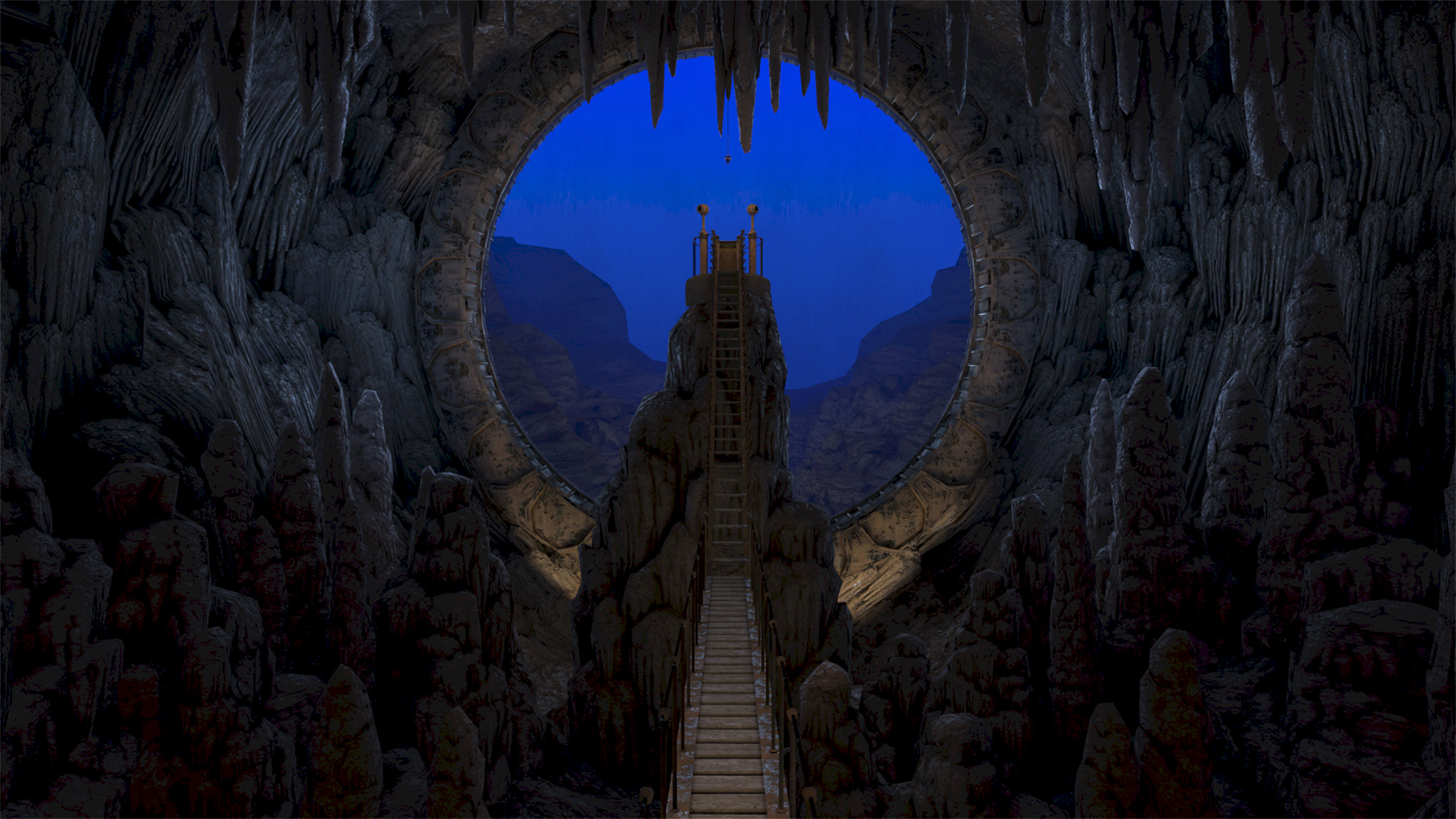
In many ways, VR is the ideal way to play Riven. The classic adventure puzzle game just got a stunning remake and a simultaneous release on Meta Quest and Steam VR platforms and its immersive world just begs to be lived in while you play.

In his weekly column, Android Central Senior Content Producer Nick Sutrich delves into all things VR, from new hardware to new games, upcoming technologies, and so much more.
I still remember playing the game long ago on my Windows 95 machine, blown away by the pre-rendered CG visuals that confounded me as often as the puzzles did. It's this deeply immersive nature of the world that ensures playing in VR feels cathartic in a way the flat-screen version simply cannot. Riven's classic design works best for players who are willing to look over, under, and around objects to look for the many cryptic clues scattered around the world.
But Riven also suffers from a problem that only occurs in VR: you can't touch everything. Players on flat-screen systems don't expect to pick up every gadget and doohickey on a table, and they certainly don't expect to climb walls or scale 2-foot-high ledges if the game doesn't allow them to.
But VR players do, and that's where an otherwise brilliant port falls abruptly on its proverbial face.
Classic and modern don't always gel
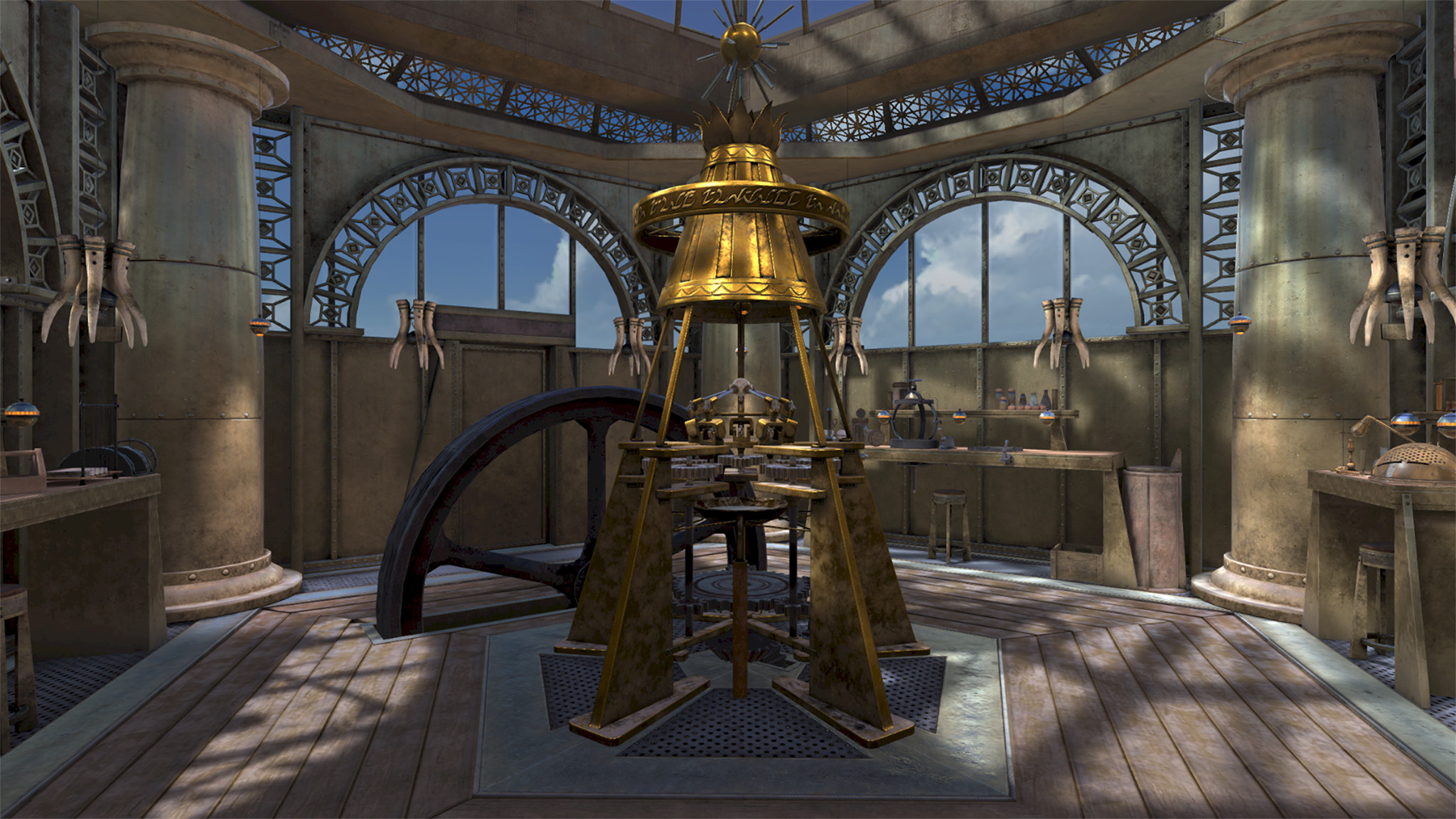
As I made my way into Gehn's Laboratory, I was ecstatic to see all the interesting tools and scientific gadgets lying around. I'd read Ghen's notes nearly 30 years ago now and couldn't wait to find out what else was cooking in the eclectic tower of mysteries from my memory.
Most of the tools and gadgets found in the tower are as static as the visuals from the 27-year-old original release.
The problem is that most of the tools and gadgets found in the tower are as static as the visuals from the 27-year-old original release. An adventure puzzle game like Riven typically thrives on only allowing users to interact with what's necessary in order to keep the player from feeling confused or lost along the way. After all, who wants to pick up a random screwdriver that has no actual use in the game? That's just a recipe for frustration.
As a VR gamer, I've become accustomed to picking up anything and everything I see lying about in a game's world, even if there is no purpose. See a pot? I've definitely got to smash it. How about a ball? I'll be throwing it as far as humanly possible to see what it can hit. Being physically present in a world—even if that physicality is virtual—makes me want to be a part of that world and interact with it.
Be an expert in 5 minutes
Get the latest news from Android Central, your trusted companion in the world of Android
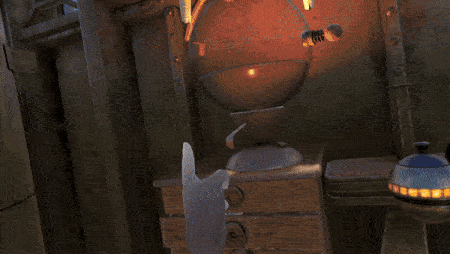
Virtually any genre can work as a VR game, but mechanics need to be redesigned around VR's inherent enhanced interaction paradigms.
But this isn't something you'll do all that often in Riven, and the experience is unnecessarily frustrating because of the limitations. Don't get me wrong, this is still the same brilliant remake of the classic you can play on other systems, and that in and of itself is a triumph. It's no small feat to cram Riven's gorgeous visuals onto a Meta Quest 3 and make it still look good.
This is where my conundrum lies. I'm a big advocate for hybrid AAA games, defined as a game that's been developed to work on flat screens and VR systems. This method works for a lot of games including action-heavy titles like Resident Evil 4 VR, platformers like Max Mustard, and especially racing games like Gran Turismo 7 on the PSVR 2.
While the formula certainly works well enough for Riven—particularly with its brilliant notebook system that lets you take and store screenshots for later puzzle reference—I can't help but wish that some of the puzzles were redesigned specifically for the VR version.
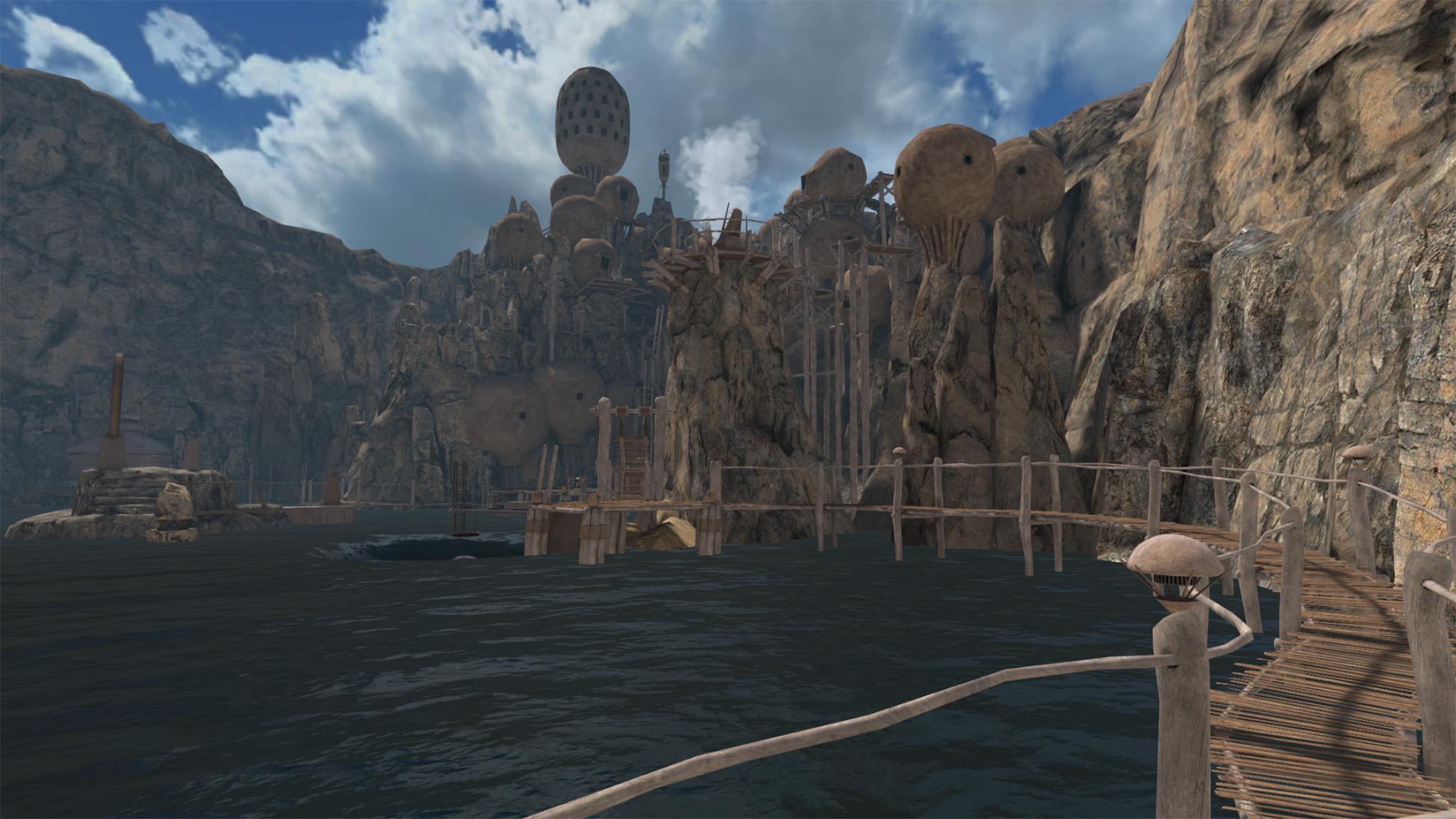
As I played through a good chunk of Riven, I regularly found myself getting fed up with the game's limitations. What feels like a clever puzzle on my Steam Deck is just annoying while playing in VR. Heading down to one of the game's hidden mines lets you grab a pickaxe to unearth a fire marble, but you can only mine one marble, and there's no further use for the pickaxe beyond this 5-second interaction.
Too many of the game's puzzles and interactions feel sloppy in VR due a lack of bespoke VR game design.
Riven's structure isn't anything like Minecraft or any other mining-and-building game, but the presence of a pickaxe makes me want to take it elsewhere and see what I can find with its utility.
Likewise, walking around the volcano island with unclimbable 2-foot walls all around me is monumentally irritating. Flat-screen players will no doubt marvel at the water shader quality or the stunning architecture all around, but I want to climb those little ledges and see what's in the water or, at least, on the other side of the pond.
There's another puzzle where you enter an area that has a boat floating on the pond. On the boat, you'll find an oar. Logically, I expect to pick up this oar and paddle myself to the other side, but Riven isn't a game that usually gives you direct control of vehicles like this. Again, this is another puzzle that just feels wrong in VR because of the level of assumed interaction that should be possible.
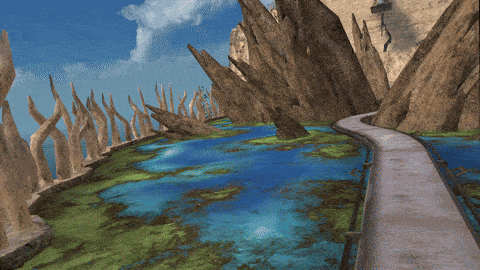
Unfortunately, Riven ends up feeling a lot like an unmodded version of Skyrim or Fallout 4 VR, games that were ported to VR but didn't receive a proper VR overhaul. In Fallout 4 VR, for example, you'll look at something and press a button to interact with it. While it's nice to have these games in VR for the immersion factor, it's mostly pointless if we're not going to get a full interaction overhaul.
Even made-for-VR games can suffer from the same design problems.
Otherwise, I'm just scratching my head while trying to grab anything that is an actual object in the room rather than just a pretty decoration. If you really want to experience the world of Riven through your own eyes, this is certainly a brilliant way to do that, but the difficulty of implementing grabbable objects and other VR-centric mechanics shows how difficult hybrid-AAA development can be.
I don't intend to pick on Riven here, as even some of the best Meta Quest games are guilty of these design flaws. Jurassic World Aftermath is one of the foremost examples, as I pointed out in my review of the game several years back, but the lack of object interaction doesn't cause undue irritation with the game's design.
Is Hybrid AAA even feasible?
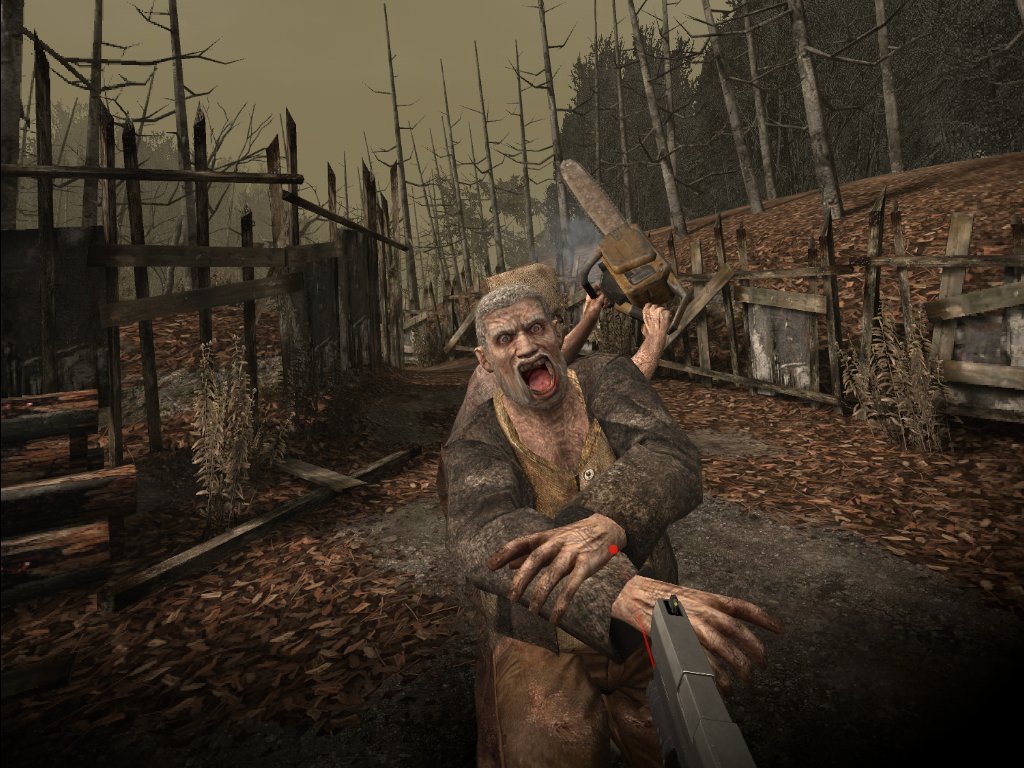
That leads me to wonder if hybrid AAA games are even a feasible concept outside of a choice few examples. The most successful hybrid games are often ones designed separately, having separate teams working on VR systems implementations and the odd intricacies required to make a game feel good in VR.
The recent Resident Evil VR releases are perfect examples of this. RE4 VR was released on Quest 2 back in 2021 and was redesigned from the ground up by Armature, one of the first-party Oculus Studios developers on Meta's payroll. Likewise, the ports of Resident Evil 4 Remake VR and Resident Evil Village VR were monetarily encouraged by Sony as a second-tier development to bolster the PSVR 2's short list of exclusive games.
All of these titles were developed separately from the main release, and all of them exhibit excellent design built specifically around VR's unique interaction possibilities and mechanics. While Riven's VR port certainly isn't a second-class release, it would have been better with some changes and a later release.
Studios like Flat2VR are working toward making official VR ports of existing flat games, ensuring bespoke mechanics and implementation for VR interaction.
Thankfully, studios like Flat2VR are working toward making official VR ports of existing flat games, and I think this particular angle is what will ultimately make hybrid AAA development the most successful. The group regularly puts out videos on its YouTube channel for popular big-name flat screen games often using the UEVR tool.
In fact, this very group is now an "official studio" working on licensed ports of popular games, all remade with bespoke VR controls and interactions. Groups like Flat2VR are the best hope for hybrid AAA games that look and feel the part, as their unique set of skills and expertise gives them the perspective needed to avoid design pitfalls that might make a VR port feel half-baked.
I absolutely want to see more hybrid-AAA games happen in the future, but Riven is proof positive that I need to tender my expectations, depending on the game.
I'm impressed with developer Cyan for bringing such a brilliant remake of an equally brilliant classic to VR on day one. I just wish a little more was done to make it feel like a VR game instead of a port of a flat game.

You must confirm your public display name before commenting
Please logout and then login again, you will then be prompted to enter your display name.
